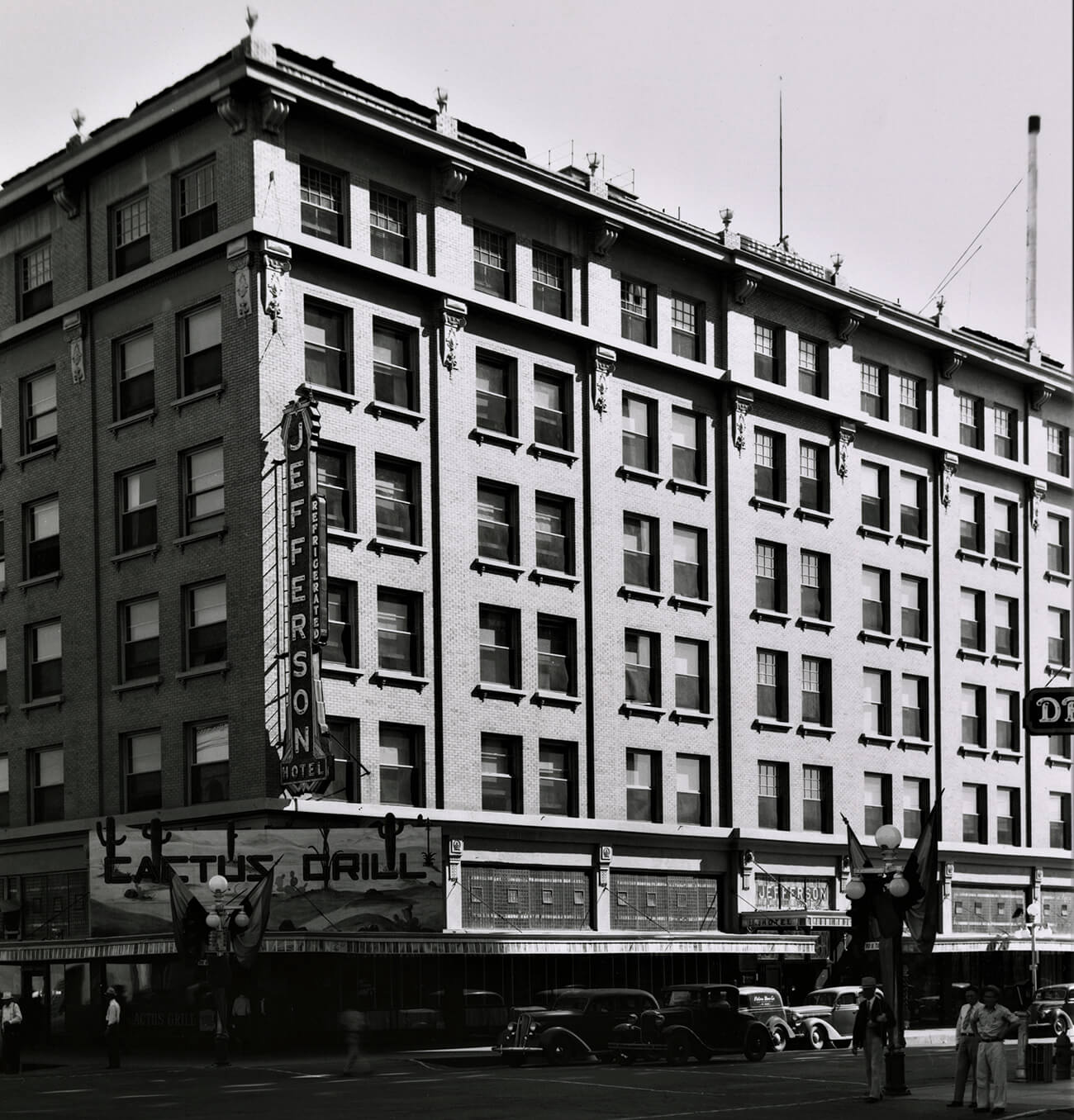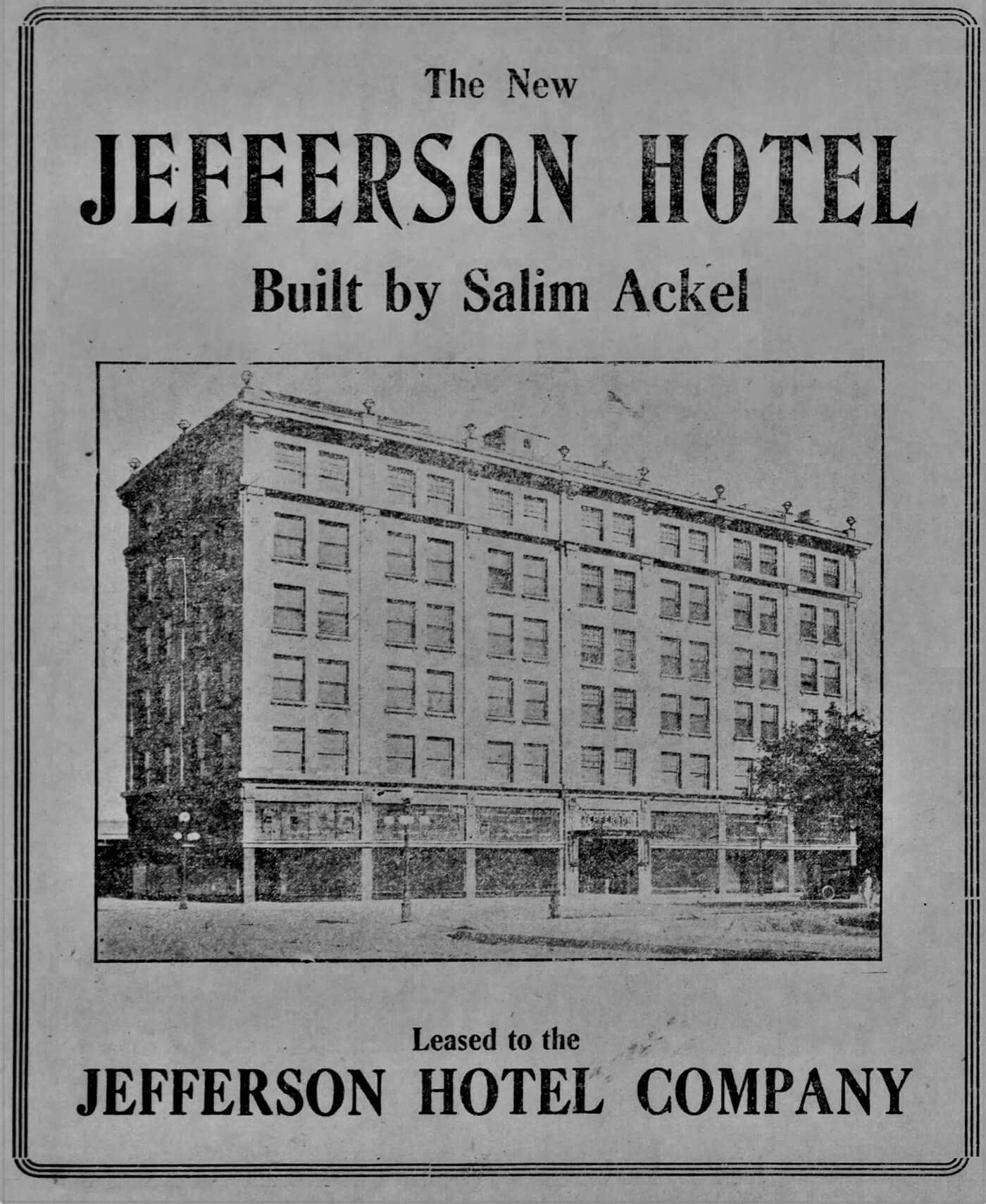People worldwide have peered in suspense into an open window on the fourth floor of the Jefferson Hotel in Downtown Phoenix, though most don’t realize it.
But savvy filmgoers know it from a voyeuristic moment in Alfred Hitchcock’s 1960 movie, Psycho. After the opening credits, the camera pans to Downtown Phoenix’s skyline and focuses through an open window, where a bank teller, played by actress Janet Leigh and her boyfriend are concluding a clandestine lunchtime rendezvous.

Jefferson Hotel in Psycho, 1960. (Credit: Psycho)
But this bit of cinematic history wasn’t the first time the Jefferson Hotel was in the spotlight. When the hotel was completed at the southeast corner of Central Avenue and Jefferson Street was completed in 1915, it was the tallest building in Arizona and would remain so for five years. The Arizona Republican newspaper printed a special six-page issue devoted to the building, which called its opening “…an epoch-making occasion in hotel circles of the Southwest.”
The paper noted for stogy connoisseurs that the main entrance on Central Avenue “is finished in the choicest marbles and tiling, is ample in its proportions and affords space for a well-equipped cigar stand without in any way interfering with the passageway.” Perhaps more noteworthy today is that the Neoclassic-style building was constructed on a reinforced concrete frame, making it the earliest example of this construction still extant Downtown.

The new Jefferson Hotel, 1915. (Credit: AZ Republic)
The Jefferson Hotel came about because of a successful Syrian immigrant, Salim Ackel. Wanting to relocate his dry goods store, he purchased a lot to construct a three-story, fireproof building. He then changed his mind and opted for a six-story building as a hotel. Ackel retained architect Frederick C. Hurst, a Canadian, who had experience with reinforced concrete construction from his work in Bisbee.
Construction took 21 months, and upon opening, it featured 150 rooms that ranged in price from $1-$3 per night. The focal point of the hotel was the roof garden that was “destined to bring that hostelry into general popularity more speedily than any other feature of the handsomely appointed hotel…it was a spot that those wishing contentment, quietude, and comfort will seek.”

Jefferson Hotel, 1930s – (Credit: ASU McCulloch)
As early as 1919, there were rumors of constructing an annex to expand the successful Jefferson Hotel, but no work was undertaken. The hotel remained in business until Downtown Phoenix declined as the city’s commercial hub. It closed and had its room furnishings auctioned in 1975.
Interest in the building occurred four years later when new owners purchased it in 1979. They gutted the interior, leaving only the structural framework, and renamed it Barrister Place, hoping that a renovation would attract legal firms. But it remained vacant until the City of Phoenix leased part of the building for offices and later purchased it in 1989. The Phoenix Police Museum opened on the bottom floor in 1995 and remained there until 2012, two years after the city offices moved out.
The city sold the building in 2015 to developers for a mixed-use redevelopment, which stalled out**. Rehabilitation plans are in progress for the adaptive use of the building, carefully integrated with new development.
**Editor’s Note: That development team is leading efforts to adaptively reuse the property.

The new Jefferson Hotel, 1915. (Credit: AZ Republic)





